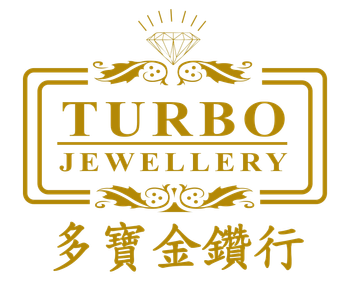About Diamond
Conflict Free Diamond
We are choosing responsible miners and ensuring they follow ethical mining practices is essential. The ethical sourcing of diamonds relies on multiple ethics check-ups and processes. Along with receiving diamonds that have passed through the Kimberley Process, we also observe high ethical standards to ensure conflict-free diamonds. Our diamonds are certified by the Kimberley Process to ensure that the diamonds are not related to rebel groups, and are mined and shipped in an ethical manner. Responsible mining means that mining organizations focus on human rights and protecting the environment. Ethical sourcing of diamonds also means skipping over suppliers that source diamonds in questionable areas.
What is the origin of the word 'diamond?'
"Diamond" comes from the Greek adamao, which signifies "I tame" or "I subdue". Another saying is from ancient times, the adjective adamas was used to describe the hardest substance known to men. It eventually became a synonym for the word diamond. It is believed that Adamas previously referred to the second hardest mineral, corundum (the gem variety is sapphire) or to something else altogether.
What are the 4 C's, and what makes them important when buying diamonds?
The quality of diamonds is translated into the 4 C's:
- Carat – the weight of the diamond.
- Colour – a clearer diamond colour means higher quality.
- Clarity – fewer imperfections mean the diamond reflects lighter and sparkles more.
- Cut – refers to the proportions of the stone, the symmetry and the diamond brilliance.
The 4 C's not only provide verifiable information about the quality of your stone, they also make it possible to make your diamond traceable. When you are going to buy diamonds, you will always get a certificate that proves the value of your diamond.
Carat
The weight or the size of the stone is expressed in carats. 1 carat equals 0.2 grams and is expressed on a scale of 100 points or 200 milligrams. The scale gives a very precise diamond weight and is rounded off to two decimal places.
The carat weight can sometimes seem to differ due to different cutting methods, but will always express the same weight. Some diamond cuts look optically larger than others because of the proportions of the diamond.
For diamond jewellery, carat refers to the total of all the included diamonds. A diamond necklace with 10 stones of 0.30 ct. will therefore be a necklace of 3.00 ct.
Colour
Most diamonds suitable for jewellery have a colour ranging from white to yellow. The correct colour of a diamond is determined based on an internationally accepted colour set, the master set, developed by the GIA. The colour ranges from D, colourless and most coveted, to Z, the most yellow.
If you are interested in buying diamonds for a pure investment, you should look for a higher colourlessness than if you want to buy diamonds in jewellery.
The names of colours have changed over time, so you might encounter terms in the diamond world that you have not heard before when you are ready to buy diamonds. However, the quality requirements concerning colour have not changed.
A diamond can also have other colours such as brown, orange, pink, blue and more. The most intense of these colours are named 'Fancy Coloured' and belong to a separate category. The 'Fancy' name is also mentioned on the certificate for your diamond. Coloured diamonds are extremely rare and therefore very expensive.
The grades of coloured diamonds are categorized into 9 subdivisions that all have a different nuance based on colour, colour saturation and depending on the individual stone. In order of least colour to most colour, they get one of the following names:
- Faint
- Very Light
- Light
- Fancy Light
- Fancy
- Fancy Intense
- Fancy Vivid
- Fancy Dark
- Fancy Deep
'Faint' shows the lightest colour that a diamond graded as 'Fancy Coloured' can have. 'Fancy Deep' is the deepest and most expensive colour saturation. Buying coloured diamonds is often very lucrative but requires a higher investment than buying colourless diamonds.
Clarity
To determine the clarity or brightness of a stone, an expert must be consulted. He examines the stone under a magnifying glass that magnifies the inside of the diamond 10 times. If no impurities are observed under these conditions, the stone is classified as pure.
Most diamonds are created with birthmarks known as inclusions or imperfections. The fewer there are the lighter the diamond reflects and the more beautifully it shines. This, however, does not mean that a diamond with inclusions cannot be eye-clean.
Buying diamonds in jewellery can often be more economical, since you can easily choose eye-clean diamonds. For investment diamonds, however, a lower brightness is less suitable.
The clarity of the diamond can be influenced by two kinds of impurities or flaws. External impurities are found on the surface due to wear or damage during cutting. By contrast, internal impurities are located inside the stone and form during the creation process. There are 3 types of inclusions:
- Black or dark spots (spots) - dark spots that occur in the carbon phase
- Veils (clouds) - microscopic veil-like inclusions that weaken the brightness
- Cracks (plumes or feathers) - molecular cracks in the composition of the carbon structure of the diamond. This is the most common type of inclusion.
Cut quality
The cut shape is the most important feature of a cut diamond. This is the only value-determining factor that is influenced by man, but it does influence the diamond’s brilliance the most. What is a diamond brilliance? The brilliance of a diamond refers to the amount of light reflected by a diamond. The amount of brilliance depends on the cut of the diamond. The cutting process is therefore the most important factor to determine the value when you want to buy diamonds.
The cut shape refers to the proportions of the parts of the cut diamond, the symmetry and the brilliance. When the pavilion of the diamond is too deep or too shallow, light will escape through the sides and the bottom of the gemstone.
In a well-cut diamond, almost all the light will pass through the crown. The size of the table varies depending on the cut shape and affects, among other things, the optical size of the diamond. The girdle is mainly responsible for strength and is described instead of graded like the rest of the cut. The bottom of the diamond, often a slightly honed point, is called the culet. This miniscule facet is often not visible to the naked eye and contributes to the brilliance.
The cut quality is determined depending on the cut shape. Other shapes than the standard round cut is called 'fancy shapes'. The best-known shapes are marquise, pear shape, oval shape, heart shape and emerald. The brilliant is the name for the round cut with 57 facets, the cut shape that sparkles most of all possible types.
Diamond Grading Reports
For more than 50 years, fine jewellers everywhere have considered the GIA Diamond Grading Report the premier credential of a diamond’s authenticity and quality.
The GIA Diamond Grading Report includes an assessment of a diamond’s 4Cs – colour, clarity, cut, and carat weight – along with a plotted diagram of its clarity characteristics and a graphic representation of the diamond’s proportions. For standard round brilliant cut diamonds falling in the D-to-Z colour range, the report also includes a GIA Cut grade.
The GIA laboratory issues diamond grading reports for loose, natural diamonds in the D-to-Z colour range that weigh 0.15 carats or more. GIA Diamond Grading Reports are not issued for laboratory-grown diamonds, diamond simulants, mounted diamonds or those that have undergone unstable treatments, such as fracture filling or coating. And while reports may be issued for diamonds that have been laser drilled or HPHT processed, reports will indicate that the diamond has been treated.
Diamond Fluorescence
Fluorescence is the visible light some diamonds emit when they are exposed to invisible ultraviolet (UV) rays. On a GIA diamond grading report, fluorescence refers to the strength, or intensity, of the diamond’s reaction to long-wave UV, which is an essential component of daylight. The light emitted lasts as long as the diamond is exposed to the ultraviolet source.
Approximately 25% to 35% of the diamonds submitted to GIA over the past decade, exhibit some degree of fluorescence. However, only 10% of those show strengths of fluorescence that may impact appearance (i.e., strengths noted on laboratory reports as medium, strong or very strong). In more than 95% of the diamonds that exhibit fluorescence, the colour seen is blue. In rare instances, the reaction is yellow, white or another colour.
无冲突钻石
我们选择负责任的矿场,并确保他们遵循道德采矿实践至关重要。钻石的道德采购依赖于多重道德检查和流程。除了接收通过金伯利进程的钻石外,我们还遵守高道德标准以确保钻石无冲突。我们的钻石已通过金伯利进程认证,以确保钻石与反叛团体无关,并以合乎道德的方式开采和运输。负责任的采矿意味着采矿组织关注人权和保护环境。钻石的道德采购还意味着跳过在可疑地区采购钻石的供应商。
“钻石” 一词起源于什么?
“钻石” 一词来自希腊语adamao,意为 “我驯服” 或“我征服”。另一个说法是从古代起,adamas这个形容词就被用来形容人们所能探知的最坚硬的物质。随着时间的变迁,它演变成为钻石的同义词。也有说法认为adamas以前指第二坚硬的矿物,刚玉(蓝宝石的硬度)或其他物质的结合。因为钻石名称的不确定性,所以很难追溯钻石的确切历史。
什么是钻石的4C, 在购买钻石时是什么让它们变得如此重要?
钻石的质量由4个C来体现。
- 克拉 (Carat)
- 颜色 (Colour)
- 净度 (Clarity)
- 切工 (Cut)
4 C不仅提供了有关钻石质量的可验证信息,还可以使您的钻石变得可追踪。 当您打算购买钻石时,您将获得证明钻石价值的证书。
克拉 ( Carat )
钻石的重量或大小用克拉表示。1克拉相当于0.2克,又分成100分(即200毫克)。在对钻石重量进行计量时,这种标准十分精确,保留至小数点后两位。
由于不同的切割方法,克拉重量有时候看起来会不同,但它们确实有着相同的重量。一些切割方法会让钻石看起来比其他钻石大,这跟钻石的比例有关。
对于钻石首饰来说,克拉是指其所包含的钻石克拉数的总和。一条钻石项链镶有10颗0.30克拉的钻石。 因此这将是一条3.00克拉的项链。
颜色 ( Colour )
大多数可用作珠宝的白色钻石,有从白色至黄色的色度深浅变化。白色钻石的颜色由国际公认的GIA的色板决定。钻石的颜色从价值最高的D色(无色级),到价值最低的Z色(浅黄色级)。
如果您有兴趣购买钻石作为个人投资的话,那么您应该寻找比用于珠宝首饰的无色级钻石。
颜色的名称会随着时间的推移而发生变化。因此在您准备购买钻石时,您可能会听到钻石世界中之前没听说过的术语。 但是,有关颜色的质量要求没有改变。
钻石也可以有其他的颜色,如棕色,橙色,粉红色或蓝色。最强烈的色调被称为“Fancy Coloured” ,这在它们的钻石证书上也会提到。这些彩色钻石是非常罕见的,因此非常宝贵。
彩钻颜色的浓郁程度被分为九个级别。每个区别主要根据颜色,颜色饱和度以及彩钻本身。由浅到深,它们有了以后的名称:
- 微
- 微浅
- 浅
- 淡彩
- 中彩
- 暗彩
- 浓彩
- 深彩
- 艳彩
'微' 是彩钻颜色等级中最淡的颜色。 '艳彩' 则是有着最深的色彩饱和度,也是最昂贵的。 购买彩色钻石通常更具投机性,但需要比购买无色钻石付出更高的投资。
净度 ( Clarity )
要确定钻石的净度或纯度,顾问需要用10倍放大镜来观察。如果在这种条件下没有观察到杂质,钻石则被分类为纯的。
大部分的钻石都带有与生俱来的印记,称为内含物。含有的瑕疵越少,通过钻石的光便越多,钻石也会越闪亮。如果钻石的净度够好,它会比任何其他宝石都耀眼。有些有瑕疵的钻石,也能目下无暇。
购买钻石珠宝往往可以经济化,您可以轻松选择无法用肉眼看到内含物的钻石。但是对于钻石投资,较低的亮度并不太适合。
钻石的净度,可能被两个方面的内含物影响。切割过程中产生的外部瑕疵或因日常磨损而产生的瑕疵,或者钻石内部本身的缺陷。夹杂物有3种类型:
- 黑色或深色点,源于碳
- 云状物:会影响净度的微小包裹物
- 羽裂纹:钻石的大部分瑕疵都来自从碳形成钻石的过程中的分子断裂。
切割质量 ( Cut )
切工是加工钻石最重要的特征。这是决定钻石的火彩,闪耀和辉煌程度的因素。因此,当您想购买钻石时,切割过程是决定价值的最重要因素。
切割形状是指钻石的比例,对称性和抛光度。如果钻石的深度太浅或太深,就会让光线穿过石头的两侧或底部,而无法从钻石台面反射回去。
一颗切割得恰到好处的钻石几乎可以反射出所有的光线,从而映射出钻石的独特光彩。台面的大小取决于切割形状,并且影响着钻石的光学效果。腰带主要负责力量的部分,而不是像其他部分一样被进行分级。钻石尖端的部分,称为亭部。这个微小的切面肉眼通常看不到,但是确实有助于提高光彩。
'切工'这个术语,还可以描述钻石的形状。除了标准的圆形明亮式切割以外,其他所有的切割形状被称为花式切工。最有名花式切工包括榄尖形,梨形,椭圆形,心形和祖母绿形。圆形明亮式的切割形状,是世界上非常受追捧的。 它的魅力在于其卓越的辉煌程度。圆形明亮式的切工,在数学工程辅助下制定,有58个切面,旨在最大限度地反射光线。
钻石鉴定证书
50 多年来,各地的珠宝商一直将 GIA 钻石鉴定证书视为证明钻石真伪和品质的最重要的凭据。
GIA 钻石鉴定证书包括对钻石 4C(颜色、净度、切工和克拉重量)的评估,以及钻石净度特征标绘图和钻石比例图示。适用于 D 到 Z 颜色等级范围内的标准圆形明亮式切工钻石,该证书还包括 GIA 切工分级。
GIA 鉴定所为重量在 0.15 克拉或以上、属于 D 至 Z 颜色范围内的未镶嵌的天然钻石签发钻石鉴定证书。对于实验室制造钻石、钻石仿品、已镶嵌钻石或经过不稳定处理手段(如裂缝填充或涂层处理)的钻石,不予签发 GIA 钻石鉴定证书。但是,GIA 会对经过镭射穿凿或高温高压 (HPHT) 处理的钻石签发证书,并且会在证书上注明,钻石已经过处理。
钻石荧光
荧光是某些钻石在不可见的紫外线 (UV) 照射下所发出的可见光。 在 GIA 出具的钻石鉴定证书上,荧光是指钻石对长波紫外线的反应强度,而长波紫外线是日光的主要成分。 荧光在钻石处于紫外线照射下时持续发出。
在过去十年间,交由 GIA 鉴定的钻石中,大约有 25% 至 35% 呈现出一定程度的荧光。 然而,其中只有 10% 呈现可能影响外观的荧光强度(即鉴定证书中注明的强度为中度、强或很强)。 在呈现荧光的钻石中,有超过 95% 的钻石可见蓝色荧光。 在极少数情况下,荧光反应呈黄色、白色或其他颜色。




